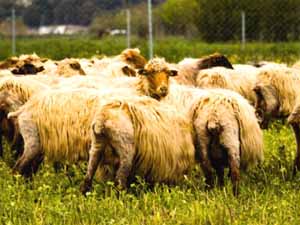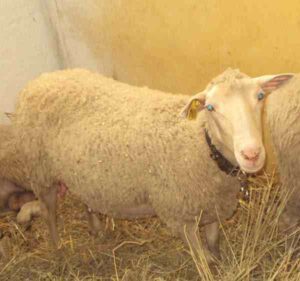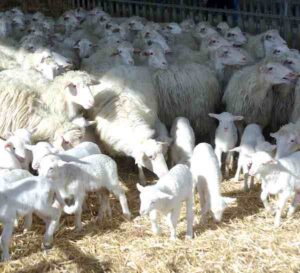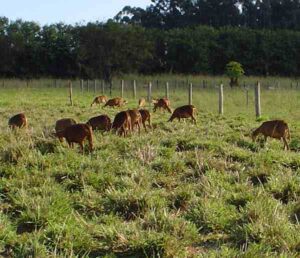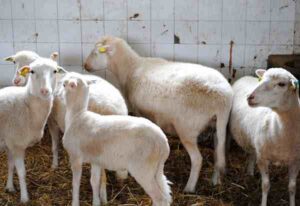The Columbia sheep is a breed of domestic sheep from the United States. It is one of the first sheep breeds which was developed from in the United States.
It was developed and a product of USDA and university research. Main aim for creating this breed was to develop such an improved breed that is adapted to the Western ranges of the country where majority of the sheep population are raised.
The breed was developed during the beginning in 1912. The Laramie, Lincoln and Wyoming rams were crossed with Rambouillet ewes.
And the foundation flock was moved to the U.S. Sheep Experiment Station near Dubois, Idaho in 1918, for further refinement.
Today, the Columbia sheep is a popular breed of domestic sheep in it’s native area. They are popular for their heavy, white fleece and good growth characteristics.
And the breed is one of the larger sheep breeds, and it is often used for cross breeding in commercial western flocks. Read some more information about this breed below.
Columbia Sheep Characteristics
The Columbia sheep are large animals with white face. They are mainly white in color, and they have wool all over their bodies except for their bare.
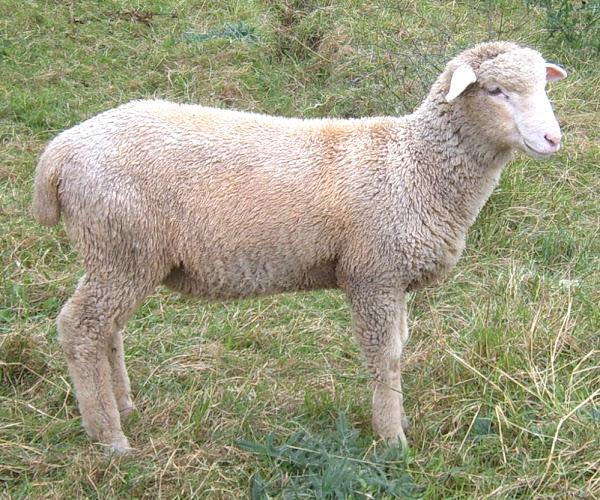
They have many similarities with the Corriedale sheep. But the Columbia sheep are much larger than the Corriedale sheep. Their feet is black and have a black muzzle.
Average live body weight of the mature Columbia rams is between 125 and 181 kg. And the mature ewe’s average live body weight vary from 79 to 136 kg.[1]
Uses
The Columbia sheep are dual-purpose animals. They are good and raised for both wool and meat production. But today, the breed is raised mainly for wool production.
Special Notes
Today the Columbia sheep are very popular breed of domestic sheep. They are hardy and well adapted to their local environments. They were actually developed for range conditions, and they have proved admirably adaptable to the lush grasses and farm flock management of the middle west, east, north and south.
Today the Columbia sheep is raised for both meat and wool production. They produce good quality wool with a staple length of 3.5 to 5 inches, and a fiber diameter of 31 to 24 microns.
The wool is classified as medium with a spin count of 50s to 60s. The breed is also good for meat production. The lambs grow relatively faster and are resilient and hardy.
The ewes are excellent mothers and are a popular choice on large farms due to their ability to easily deliver large and strong lambs. However, review full breed profile of the Columbia sheep in the following chart.
| Breed Name | Columbia |
| Other Name | None |
| Breed Purpose | Mainly wool, but also good for meat production |
| Special Notes | Very hardy and strong animals, well suited to native climates, hardy and were actually developed for range conditions, today raised mainly for wool production but are also good for meat production, grow relatively faster, resilient and hardy, ewes are excellent mothers |
| Breed Size | Large |
| Weight | Mature ram’s live body weight is between 125 and 181 kg, and the mature ewe’s average live body weight vary from 79 to 136 kg. |
| Horns | No |
| Climate Tolerance | Local climates |
| Color | White |
| Rarity | Common |
| Country/Place of Origin | United States |


